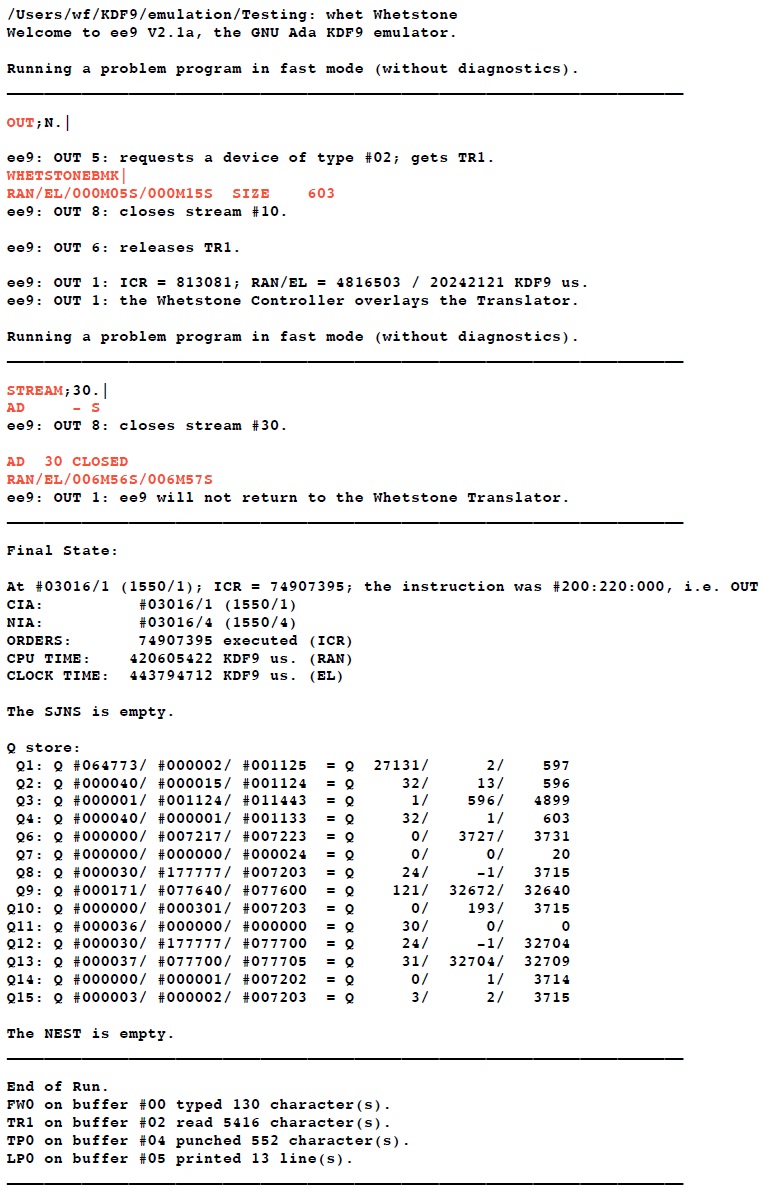|
KDF9 was built from germanium semiconductors but also used a form of logic
based on toroidal tranformers.
Its chief memorable feature was that, instead of having an accumulator, it utilised a pushdown stack
so that arithmetic operations operated upon the top two or more entries in the stack and thus were
of zero-address form.
This made it a close match to reverse Polish notation which was very convenient for compilers.
This feature does not seem to have been utilised by later designs.
The principal programming languages were FORTRAN and Algol 60,
although quite a lot of code was written in assembler called Usercode.
There were two operating systems in use, EGDON and the Time-Sharing Director.
None of the EGDON software has survived.
We have succeeded in preserving language systems from the Time-Sharing Director systems, and also
an early version of the Time-Sharing Director itself.
All of this was
recovered from original lineprinter listings
and just one original paper tape.
|

|
to David Holdsworth’s collection of original KDF9 software
and documentation.
There is the C source code for an O/S independent emulator,
and a facility for on-line access to this for running
the original compilers and assemblers.
There are also various software tools, including newly written assemblers
that produce detailed listings,
coupled with a facility for adding hyperlinks to the listings.
|
|

|
to Bill Finday’s website which includes KDF9 emulator binaries
for most mainstream operating systems.
The Whetstone Algol system is included, among other KDF9 programs,
and the means to write, compile and run your own new ones.
Ada source and documentation of the emulator are provided for anyone
wishing to make other ports.
There is an example showing emulation of the Time-Sharing Director.
|

|
|
|
